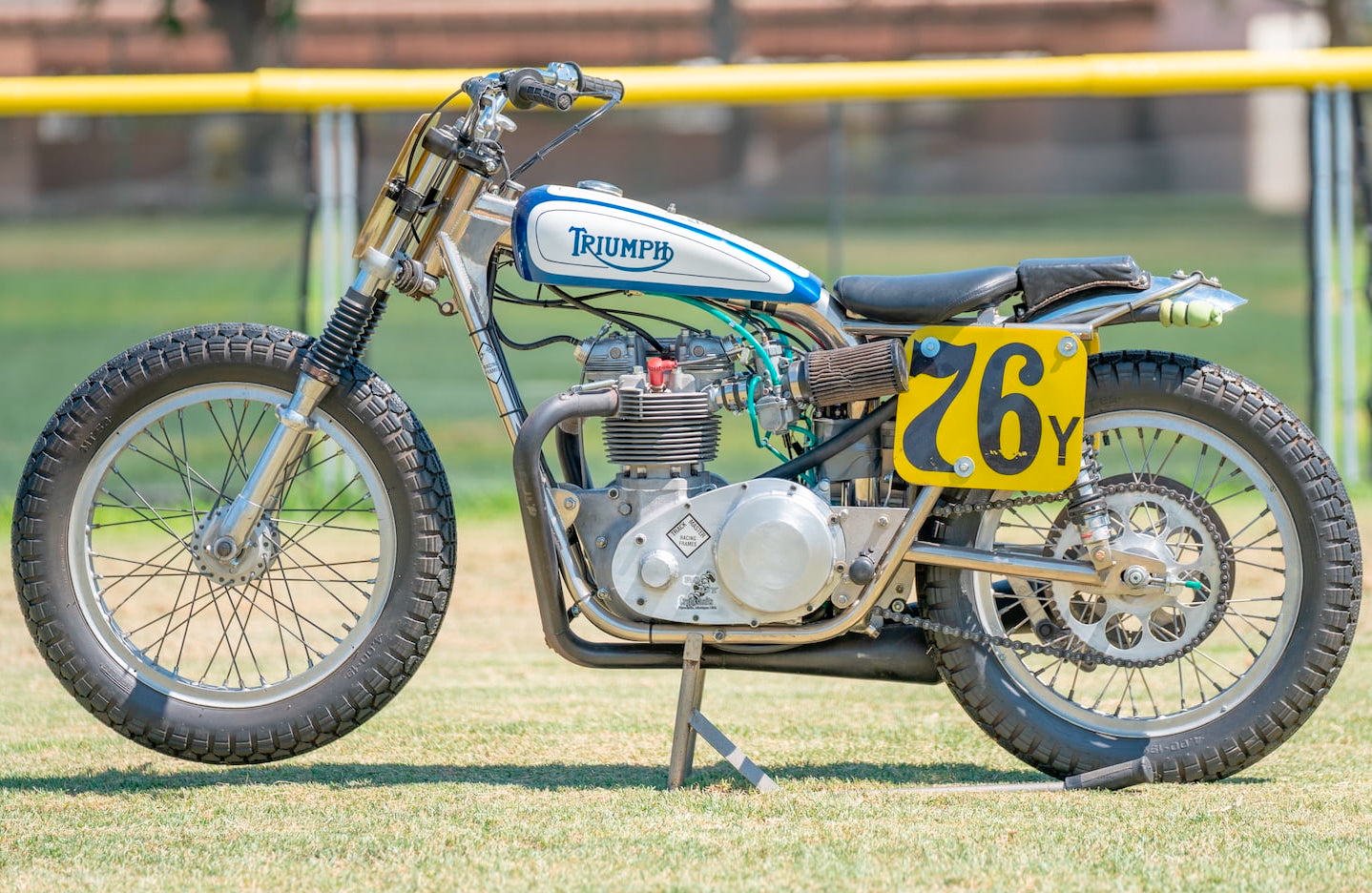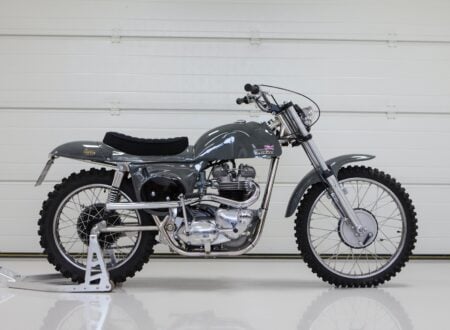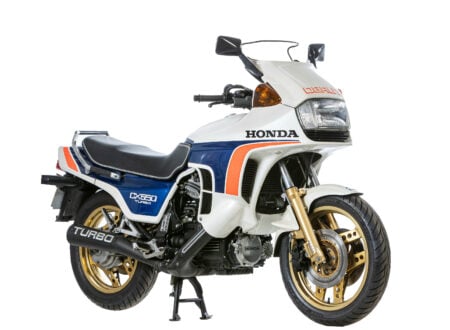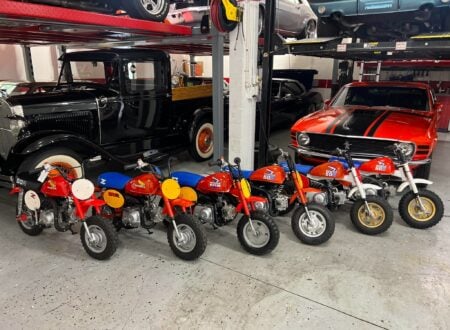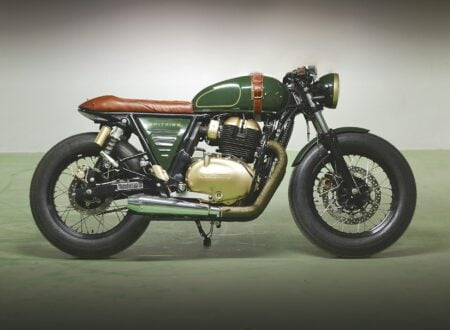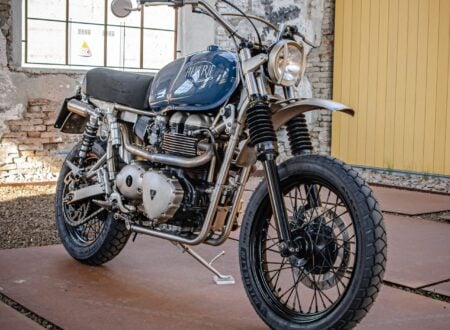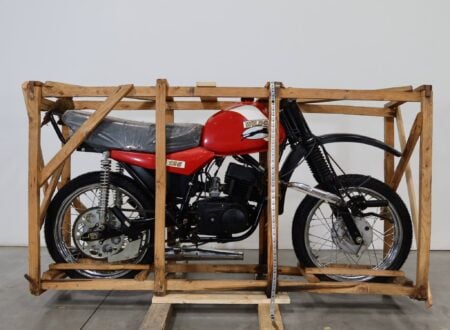The 1972 Triumph Trackmaster you see here is the bike ridden by Ron Moore in the 1970s that set the record around the Ascot TT circuit in Gardena, California. A record that then stood for years.
The brandnames Triumph and Trackmaster go together like bacon and eggs, the two companies were collaborating to build the world’s fastest flat trackers in the late 1960s, creating a legend in the process.
Fast Facts – An Original Triumph Trackmaster
- Trackmaster was founded by motorcycle frame builder Ray Hensley in 1967 after Triumph Motorcycles approached him, asking him to build special racing frames for the factory flat track bikes.
- Hensley was a former racer and self-taught engineer with an uncanny knack for knowing what would work and what wouldn’t. His Trackmaster frames became legendary, they were fitted with engines from many of the major manufacturers, and they won countless races.
- The Triumph Trackmaster you see here is an original built in period by Hensley and his team, it’s a duplex cradle chromoly frame fitted with a Tony Denius-tuned Triumph parallel twin.
- This is the bike that was ridden by Ron Moore to a popular win at the Ascot TT circuit in California where hew set a lap record that stood for years.
Trackmaster Frames – A (Very) Quick History
Trackmaster originally started out as a company named Sonicweld, it was founded by Ray Hensley in the 1960s specifically to build strong, lightweight frames for flat track racing in the United States.
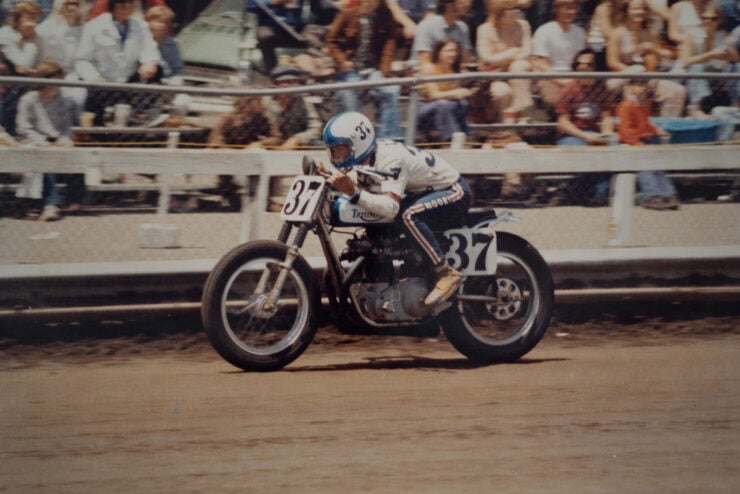

Hensley had started out as a racer himself and a competitive one at that, but the lure of the engineering side of racing was too strong.
He started out modifying frames by repeatedly riding his BSA into a kerb, to bend the frame neck and shorten the wheelbase slightly while reducing the rake – this gave the bike quicker turn in and made it more responsive for flat track racing.
After the AMA made custom racing frames legal for competition use riders were no longer stuck with the original frame that their motorcycle had come with – typically they were too heavy and had too much rake.
This was when Hensley got into business as Sonicweld, teaching himself the basics of frame geometry and welding in the process. His frames were inspected by the AMA and approved – and not long after this Triumph came knocking.
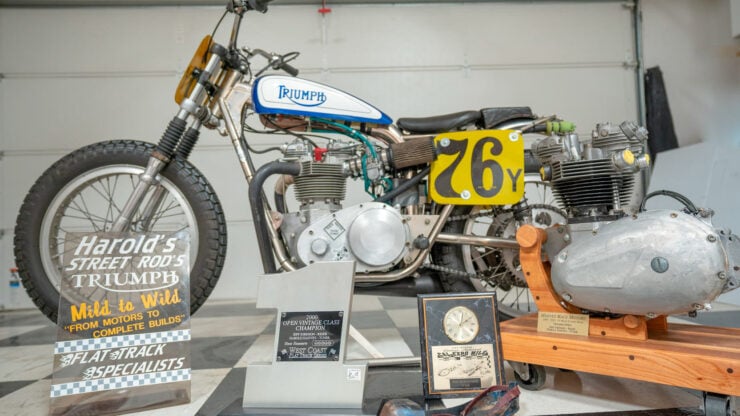

Legendary flat track champion Gary Nixon knew Hensley and to his credit, he loaned him $1,000 to set up shop and make his operation legitimate. This was a sizable chunk of money at the time, enough for Hensley to rent a building and hire some staff.
The very first Trackmaster frame went to flat track legend Gene Romero, Gary Nixon got his soon after and the rest is history. Companies like Redline and Champion soon appeared to challenge Trackmaster but Hensley’s company stayed number one.
The market for custom frames began to dry up as the 1970s progressed and manufacturers got better at making their own race frames, oftentimes by copying the work of people like Hensley, Bimota, the Rickman brothers.
More recently the company was brought back into full production to provide brand new frames welded up using the original jigs. It’s now possible to build yourself a brand new Triumph Trackmaster that looks just like those first originals from the late 1960s.
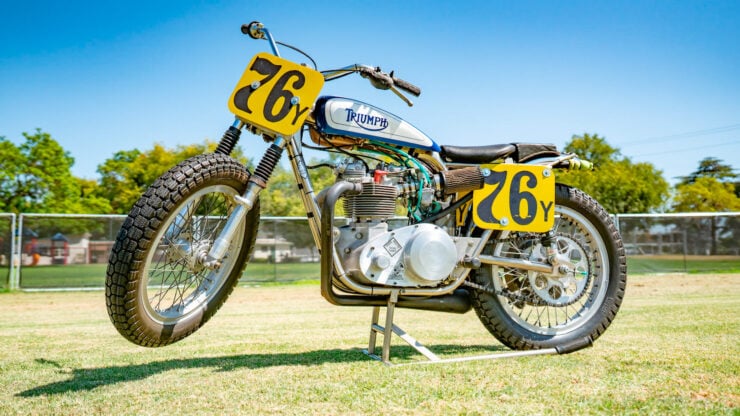

The 1972 Triumph Trackmaster Shown Here
Many Trackmaster-framed motorcycles did well for themselves in flat track competition in the 1960s and 1970s, but the bike you see here did better than most.
It’s powered by a Hanvey-built 750cc Triumph parallel-twin tuned by Tony Denius and fitted with a billet crank, Crower titanium connecting rods, a Megacycle 460 cam, a Morgo high volume oil pump, an Alloy Tec ignition, Alloy Tec chromemoloy push rods, and a pair of 12.5:1 high compression pistons designed by Hanvey.
This was one of the bikes raced in period by Ron Moore with great success, winning at the Ascot TT circuit in Gardena, California and holding the lap record for many years. It’s now being offered for sale along with a spare Hanvey 650 race engine on a custom display stand, and a selection of corroborating documentation, associated parts, tools, and other artifacts.
This bike is due to roll across the auction block with Mecum in late January, if you’d like to read more about it or register to bid you can click here to visit the listing.
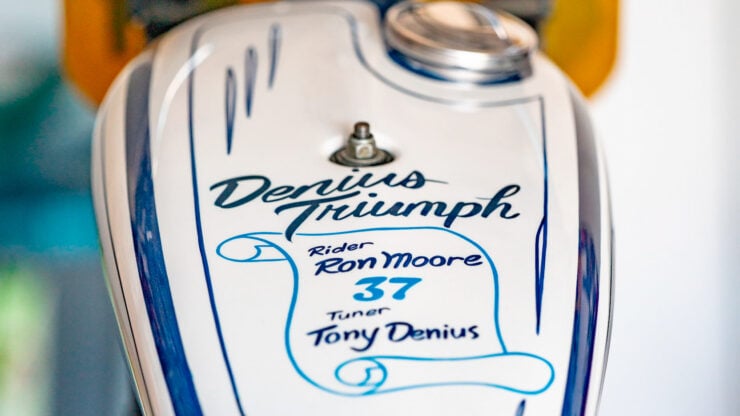
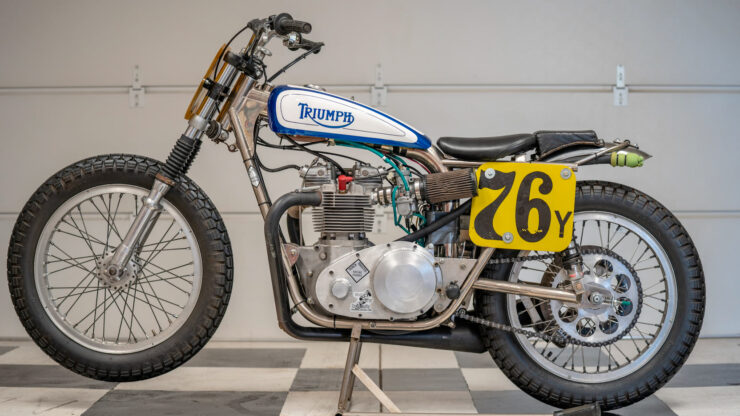
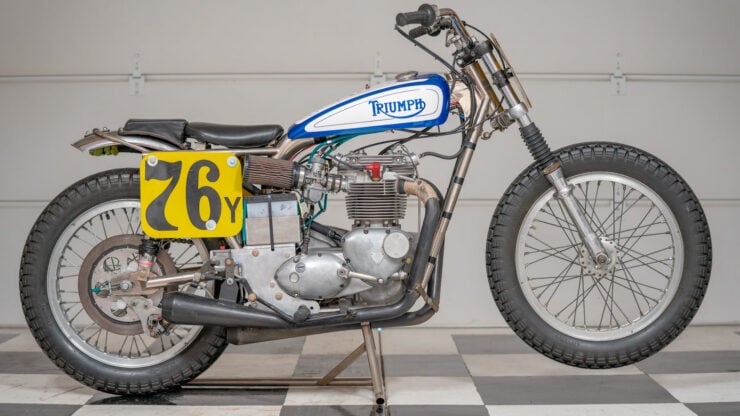
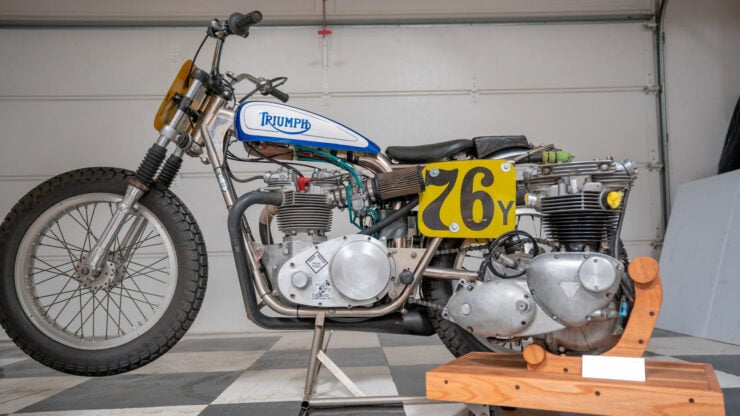
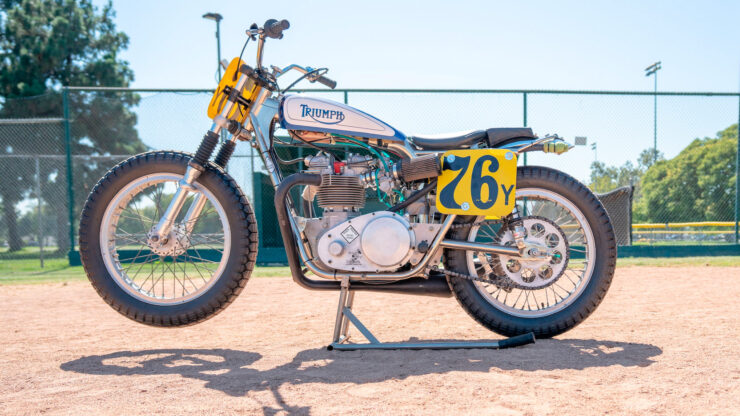
Images courtesy of Mecum Auctions

Articles that Ben has written have been covered on CNN, Popular Mechanics, Smithsonian Magazine, Road & Track Magazine, the official Pinterest blog, the official eBay Motors blog, BuzzFeed, Autoweek Magazine, Wired Magazine, Autoblog, Gear Patrol, Jalopnik, The Verge, and many more.
Silodrome was founded by Ben back in 2010, in the years since the site has grown to become a world leader in the alternative and vintage motoring sector, with well over a million monthly readers from around the world and many hundreds of thousands of followers on social media.

